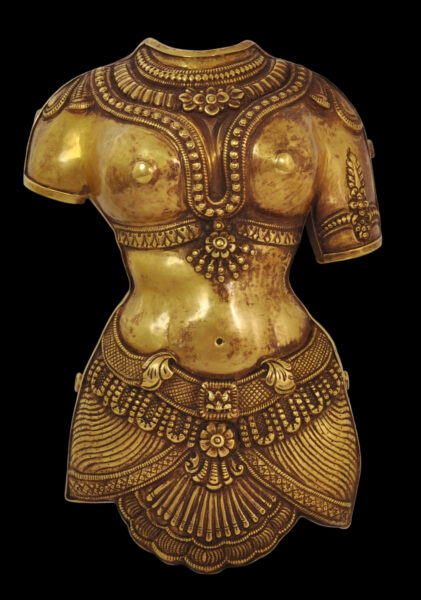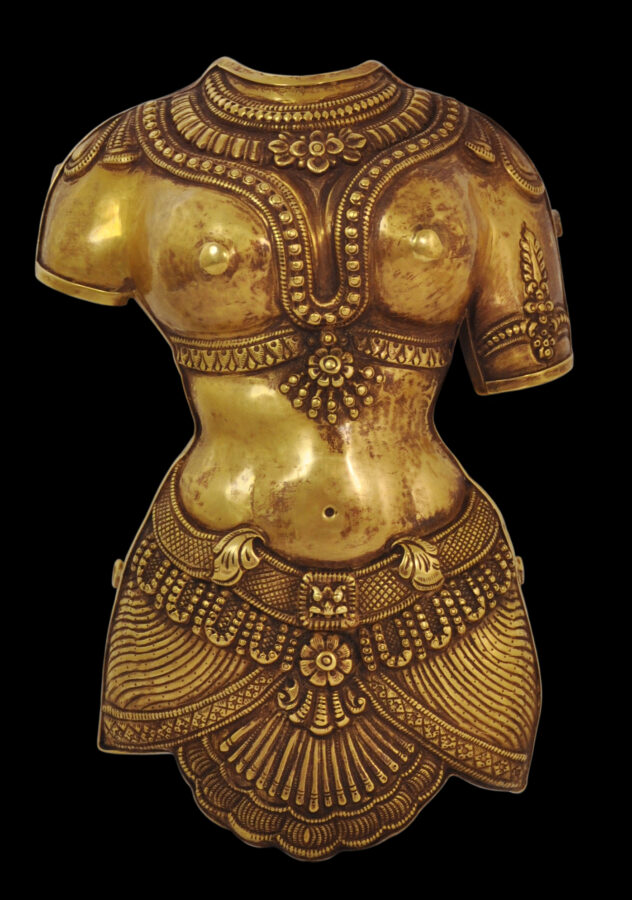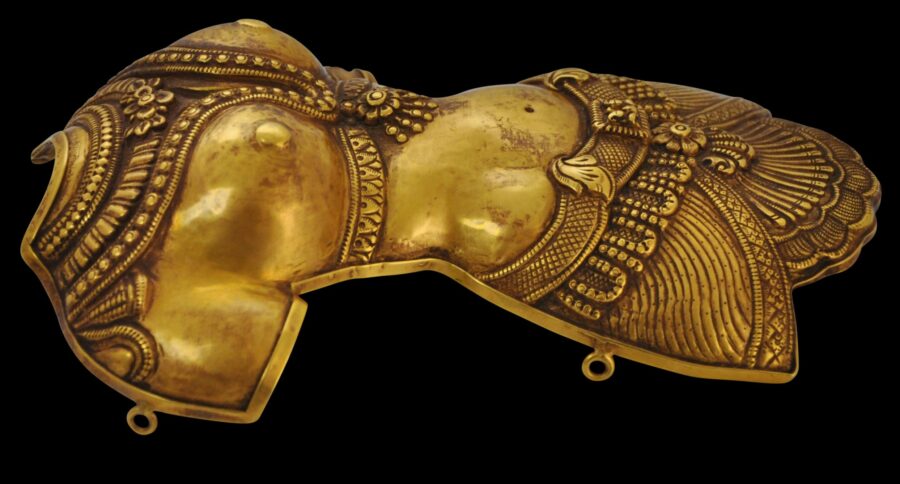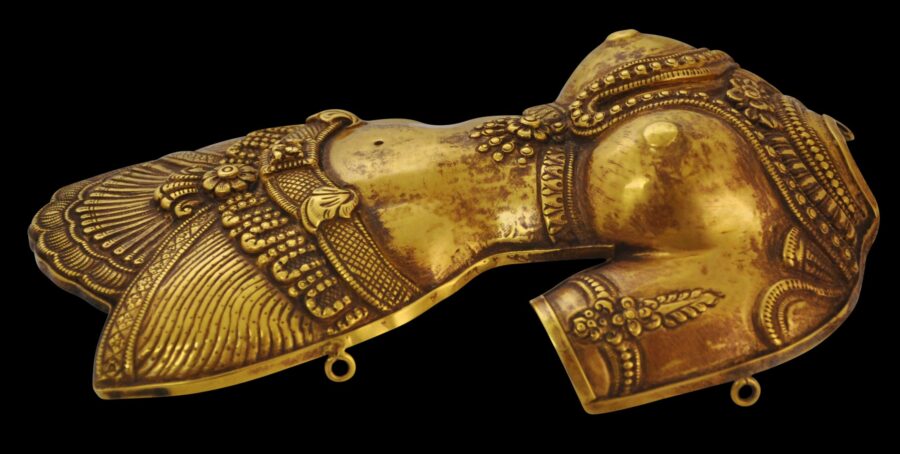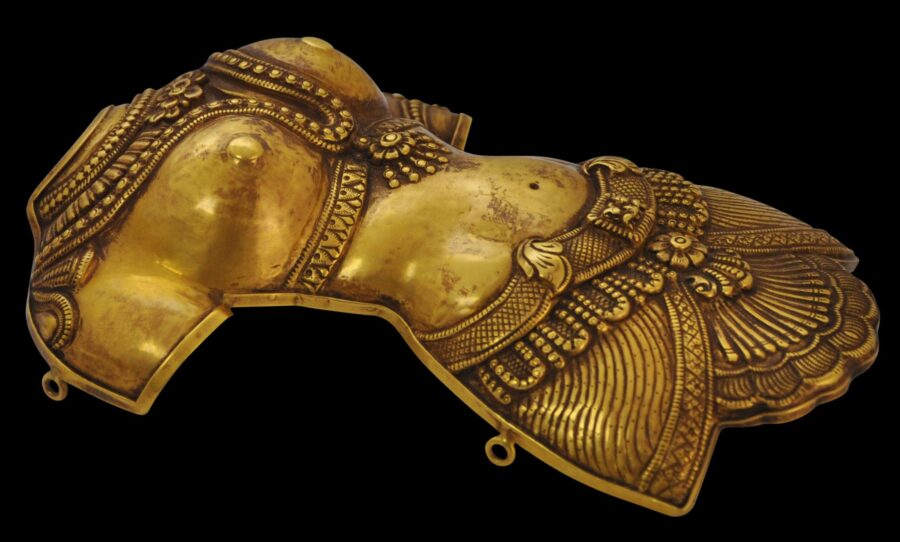This fine ornament chased and engraved from thick solid gold sheet was intended as a body covering or ‘armour’ for a female deity carved from stone or of cast bronze. Known as a kavacham (literally, ‘shield’), it has the naturalistic form of a youthful body and would have been used to ‘dress’ a statue during feast and ceremonial days and also for processions when the deity images were paraded around the temple grounds.
The kavacham here has been richly decorated with copious elaborate jewellery motifs including a waist clasp in the form of a small kurtimukha.
The ornament has four small gold loops to allow it to be attached to an image.
Such items were commissioned by wealthy devotees and temple patrons and presented to the temple.
Interestingly, the form seems to have influence from ancient Rome, and certainly relate to the styling of statues of the Chola and Vijayanagar periods in South India.
Similar examples in the Barbier-Mueller Museum (Geneva) are illustrated in Bala Krishnan et al (2005, P. 101, 103). Other examples are in several other museums around the world, but generally, the example here is significantly larger than most of those in public collections. Singapore’s Asian Civilisations Museum, for example, has an example but it is just 9.7cm in height. That example has also been dated to the 18th century. (See Menzies, 2007, p. 171).
The kavacham here is in excellent condition.
References
Bala Krishnan, U.R. et al, Icons in Gold: Jewelry of India from the Collection of the Musee Barbier-Mueller, Somogy, 2005.
Menzies, J., Goddess Divine Energy, Art Gallery of New South Wales, 2007.


